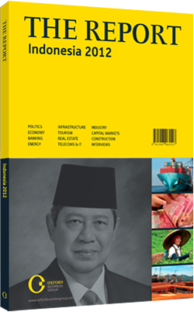Party lines: Political groups share similar ideologies but differ in leadership styles
With nine parties represented in the Indonesian legislature – and six of those present in the cabinet – the political landscape of the country is clearly very multifaceted. Though three parties tend to dominate the scene, no one group has been able to gain a majority in parliament and shifting coalitions and alliances ensure a wide variety of influences and viewpoints.
THE MAJOR PLAYERS: Currently, the largest party in the legislature – the People’s Representative Council (DPR) – is the Democratic Party (DP), with 148 seats in the 560-seat assembly after the 2009 general election. The DP is also one of the newest groups, formed largely as an election vehicle for the current president, Susilo Bambang Yudhoyono (SBY), in September 2001. Its fortunes have thus been tied to SBY, with the surge in support for him illustrated well by the fact that the DPR, the DP won only 57 seats in the 2004 elections. The DP’s beliefs are those of pancasila, the five official founding principles of the Indonesian state: belief in one god; a just and civilised humanity; the unity of the country; democracy; and social justice.
The oldest and second-largest party, Golkar, won 107 seats in 2009 and also adheres to pancasila. Indeed, it was the ruling party during the whole period of the Suharto regime, from 1966-98, and under the presidency of Bacharuddin Jusuf Habibie in 1998-99. It thus has one of the oldest established local party networks, with many powerful and influential supporters. Its leader is Aburizal Bakrie, who also leads the governing coalition in the DPR and is a member of the cabinet.
The third-largest party is the Indonesian Democratic Party-Struggle (PDI-P), led by Megawati Soekarnoputri, the daughter of former President Soekarno. The official ideology of the party is also pancasila, although the PDI-P is the largest opposition party in the DPR. It is the result of a split in the Indonesian Democratic Party, which was also led by Megawati and – with Golkar – was one of two parties allowed by Suharto.
LEADERSHIP: As all the major parties have platforms based on pancasila, differentiation between them has become increasingly based on their respective leadership styles rather than on ideologies. It is difficult to make a distinction between secular and Islamic platforms as all three parties, usually seen as secular, have incorporated many Islam-based policies in recent years.
POLITICAL ISLAM: One of the major debates in Indonesian politics has long been over the role of Islam, with a rough divide between secular and Islamic-leaning parties sometimes evident. Coalition governments, however, have always included groups from both sides.
The political Islamic movement in Indonesia has long been dominated by two groups – the more traditionalist Nahdlatul Ulama (NU) and the more reformist Muhammadiyah. These have sometimes given their backing to political parties, although in 2009, Muhammadiyah declared neutrality, while NU traditionally backs the National Awakening Party (Partai Kebangkitan Bangsa, PKB), which won 28 seats and is in the governing coalition, with representation in the cabinet.
These traditional Islamist groups have been joined in recent times, however, by more contemporary outfits. The Prosperous Justice Party (Partai Keadilan Sejahtera, PKS), modelled on Turkey’s pragmatic Islamist Justice and Development Party, won 57 seats in 2009, mobilising a more urban, middle-class religious voter base than the PKB. The PKS is also represented in the cabinet. Two other Islamist groups are the United Development Party (Partai Persatuan Pembangunan, PPP), which won 37 seats in the DPR, and the National Mandate Party (Partai Amanat Nasional, PAN), with 43 seats.
Both also took places in the cabinet.
With a parliament dominated by coalitions, the post-2009 government is often faced with the challenge of maintaining a common purpose among so many groups.
This has in many cases given way to power struggles within the cabinet and the DPR, thereby hampering the legislative timetable. While this has created some level of dissatisfaction among the public, the fact that so many viewpoints are represented in the politics of the country today is undoubtedly a positive development.
You have reached the limit of premium articles you can view for free.
Choose from the options below to purchase print or digital editions of our Reports. You can also purchase a website subscription giving you unlimited access to all of our Reports online for 12 months.
If you have already purchased this Report or have a website subscription, please login to continue.

